Prosthetic rehabilitation in neurosurgical cranioplasty
- PMID: 29430147
- PMCID: PMC5799974
- DOI: 10.4103/jips.jips_136_17
Prosthetic rehabilitation in neurosurgical cranioplasty
Abstract
The defects of the skull cause mechanical vulnerability of the brain, esthetic disfigurement, and transmission of vibrations and pulsation of the brain. Subsequent cranioplasty may be required to compensate for the defect and to alleviate various signs and symptoms. When long-term outcome of biomaterial use in pediatric cases is limited, alloplastic cranioplasty in adults are supported by several large case series. This case report narrates cranioplasty using titanium alloplastic implant material.
Keywords: Cranioplasty; prosthesis; reconstruction; titanium implants; trauma.
Conflict of interest statement
There are no conflicts of interest.
Figures




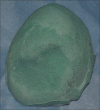
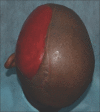





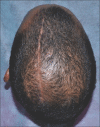
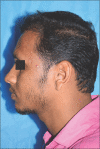

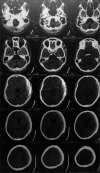
References
-
- Pavaiya A, Tyagi VK, Tripathi A, Singh SV, Chand P. Cranioplasty with alloplastic cranial implant. J Indian Prosthodont Soc. 2009;9:109–11.
-
- Goiato MC, Pesqueira AA, dos Santos DM, Antenucci RM, Ribeiro Pdo P. Evaluation of dimensional change and detail reproduction in silico nes for facial prostheses. Acta Odontol Latinoam. 2008;21:85–8. - PubMed
-
- Punchak M, Chung LK, Lagman C, Bui TT, Lazareff J, Rezzadeh K, et al. Outcomes following polyetheretherketone (PEEK) cranioplasty: Systematic review and meta-analysis. J Clin Neurosci. 2017;41:30–5. - PubMed
-
- Alqutaibi AY. Materials of facial prosthesis: History and advances. Int J Contemp Dent Med Rev. 2015;2015:4.
Publication types
LinkOut - more resources
Full Text Sources
Other Literature Sources
